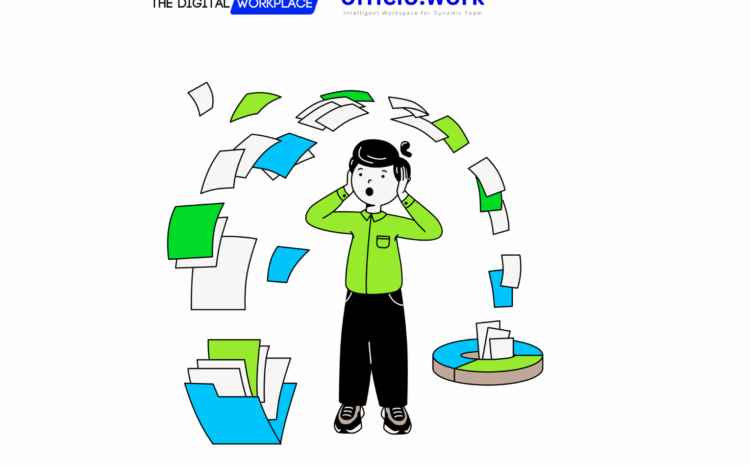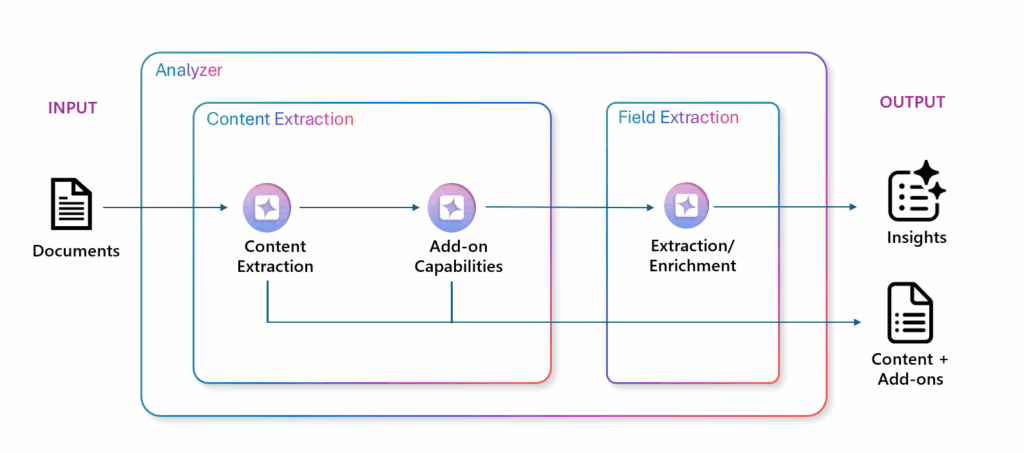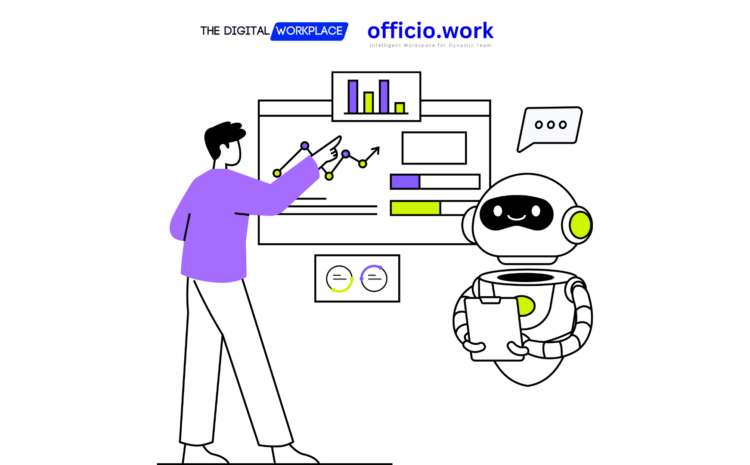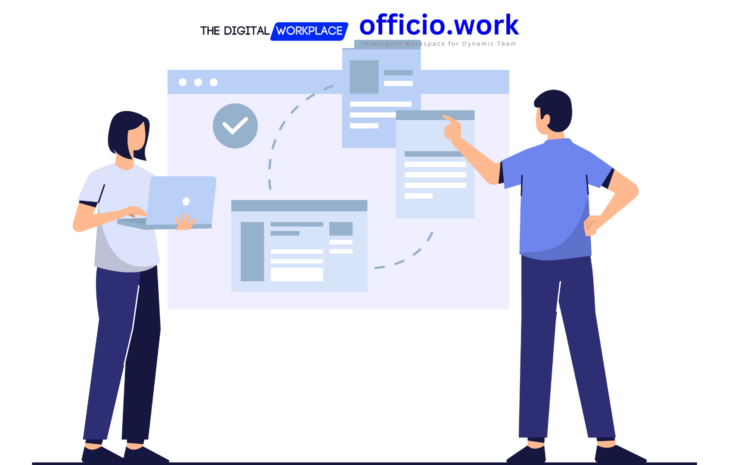
In the rapidly evolving field of artificial intelligence (AI), Retrieval-Augmented Generation (RAG) has emerged as a groundbreaking technique for enhancing the capabilities of large language models (LLMs). By integrating external knowledge sources into the generation process, RAG enables AI systems to provide more accurate, context-aware, and domain-specific responses. One notable implementation of RAG is seen in Personal Assist, a platform that leverages Microsoft’s Azure AI Content Understanding services to process and analyze user-uploaded documents. In this article, we will explore the technical aspects of RAG, its integration with document understanding, and how platforms like Personal Assist are pushing the boundaries of AI-powered solutions.
What is Retrieval-Augmented Generation (RAG)?
Retrieval-Augmented Generation is a hybrid approach that combines the generative capabilities of large language models with the precision of information retrieval systems. Traditional LLMs, such as GPT models, are trained on vast datasets but are limited by the static nature of their training data. RAG addresses this limitation by enabling models to retrieve relevant information from external knowledge bases or documents in real time, augmenting their responses with up-to-date and domain-specific insights.
How RAG Works
- Query Input: A user submits a query or request to the system.
- Knowledge Retrieval: The system searches external knowledge sources (e.g., databases, documents, or APIs) to find relevant information.
- Information Integration: The retrieved data is fed into the LLM, which uses it to generate a response.
- Response Generation: The AI model produces a response that combines its inherent knowledge with the retrieved information.
This approach ensures that the generated output is both contextually relevant and factually accurate, making RAG ideal for applications requiring dynamic and specialized knowledge.
Document Understanding with RAG: The Role of Azure AI Services
Document understanding is a critical application of RAG, especially in scenarios where users need to extract insights from unstructured or semi-structured data. Microsoft’s Azure AI Content Understanding services provide robust tools for analyzing and processing documents, enabling platforms like Personal Assist to deliver enhanced functionality.

Content extraction enables the extraction of both printed and handwritten text from forms and documents, delivering business-ready content that is immediately actionable, usable, or adaptable for further development within your organization. – Microsoft
Azure AI Content Understanding Overview
Azure AI Content Understanding is a suite of services designed to extract, classify, and analyze information from various document formats. It supports:
- Text Extraction: Extracting text from PDFs, Word documents, PowerPoint presentations, Excel spreadsheets, and images.
- Key-Value Pair Identification: Identifying structured data such as tables, forms, and key-value pairs.
- Entity Recognition: Detecting named entities like dates, names, and locations.
- Custom Models: Training custom models to handle domain-specific document types.
By integrating Azure AI Content Understanding with RAG, platforms can retrieve relevant information from uploaded documents and use it to generate precise and actionable responses.
How officio.work Personal Assist Leverages RAG and Azure AI
Personal Assist is a cutting-edge platform that combines RAG with Azure AI Content Understanding to provide users with advanced document analysis capabilities. At present, the platform supports the upload of documents in the following formats:
- DOC (Microsoft Word)
- PPT (Microsoft PowerPoint)
- XLS (Microsoft Excel)
- Images
Workflow of Personal Assist
- Document Upload: Users upload documents in supported formats.
- Content Extraction: Azure AI Content Understanding processes the documents to extract text, tables, and other relevant data.
- Knowledge Retrieval: The extracted content is indexed and used as a knowledge base for RAG.
- Response Generation: When users query the system, RAG retrieves relevant information from the uploaded documents and generates a response tailored to the query.
This workflow enables Personal Assist to act as a powerful assistant for tasks such as summarizing documents, answering questions based on document content, and extracting specific insights.
Technical Benefits of RAG in Document Understanding
1. Enhanced Accuracy
By retrieving information directly from user-uploaded documents, RAG ensures that responses are grounded in the most relevant and authoritative data. This eliminates the risk of hallucinations (false information) often associated with LLMs.
2. Dynamic Knowledge Integration
Unlike static LLMs, RAG allows for real-time integration of new knowledge. Users can upload documents containing the latest information, and the system can immediately leverage this data to generate responses.
3. Cost Efficiency
RAG reduces the need for extensive retraining of LLMs. Instead of training models on domain-specific data, organizations can use RAG to retrieve relevant information from external sources, saving time and computational resources.
4. Scalability
Platforms like Personal Assist can scale their capabilities by supporting additional document formats and integrating more advanced retrieval mechanisms, such as semantic search or vector-based indexing.
Challenges and Future Directions
While RAG offers significant advantages, there are technical challenges to address:
- Data Quality: Ensuring that the retrieved information is accurate and free from bias is critical for maintaining the integrity of responses.
- Complexity of Integration: Seamlessly integrating document understanding services with RAG requires robust engineering and optimization.
- Format Expansion: Supporting additional document formats, such as JSON, XML, or multimedia files, will enhance the versatility of platforms like Personal Assist.
Future Enhancements for Personal Assist
To further improve its capabilities, Personal Assist could:
- Expand Document Format Support: Include formats like TXT, CSV, and JSON to cater to a broader range of use cases.
- Implement Semantic Search: Use vector-based search techniques to retrieve more contextually relevant information from documents.
- Enable Real-Time Collaboration: Allow multiple users to interact with the system simultaneously, sharing insights and queries.
Conclusion
Retrieval-Augmented Generation is revolutionizing the way AI systems interact with external knowledge sources, particularly in the realm of document understanding. By leveraging Azure AI Content Understanding services, platforms like Personal Assist are setting new benchmarks for AI-powered solutions. With support for popular document formats and the ability to generate context-aware responses, Personal Assist demonstrates the immense potential of RAG in transforming how we process and analyze information.
As RAG continues to evolve, its integration with advanced document understanding technologies will unlock new possibilities for businesses, researchers, and individuals alike. Whether it’s summarizing lengthy reports, answering complex queries, or extracting actionable insights, RAG is paving the way for smarter, more efficient AI systems.




